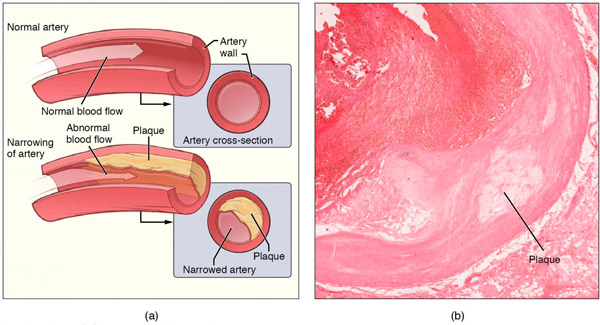New publications
Cancer signatures in atherosclerosis discovered, opening new treatment options
Last reviewed: 02.07.2025

All iLive content is medically reviewed or fact checked to ensure as much factual accuracy as possible.
We have strict sourcing guidelines and only link to reputable media sites, academic research institutions and, whenever possible, medically peer reviewed studies. Note that the numbers in parentheses ([1], [2], etc.) are clickable links to these studies.
If you feel that any of our content is inaccurate, out-of-date, or otherwise questionable, please select it and press Ctrl + Enter.

Researchers have found that smooth muscle cells lining arteries in people with atherosclerosis can transform into new cell types and acquire cancer-like features, making the disease worse. The study is published in the journal Circulation.
Atherosclerosis is characterized by a narrowing of the artery walls and can increase the risk of coronary heart disease, stroke, peripheral arterial disease, or kidney disease. These findings, supported by the National Institutes of Health (NIH), may pave the way for the use of anticancer drugs to counteract the tumor mechanisms that lead to plaque formation in the arteries, a major cause of cardiovascular disease.
"This discovery opens a completely new dimension in our understanding of therapeutic strategies to prevent and treat atherosclerosis," said Ahmed Hasan, MD, program director of the Division of Cardiovascular Sciences at the National Heart, Lung, and Blood Institute, which is part of NIH.
"Previous studies have suggested that atherosclerosis and cancer may have some similarities, but this link has not been fully described until now."
Using a combination of molecular techniques in mouse models and tissue samples taken from patients with atherosclerosis, the researchers characterized the molecular mechanisms that lead to the transition of smooth muscle cells into cancer-like cell types.
The researchers found elevated levels of DNA damage and genomic instability — two hallmarks of cancer — in the transformed smooth muscle cells of atherosclerotic plaques compared with healthy tissue. Genomic instability is an increased susceptibility to DNA mutations and other genetic changes during cell division.
Probing further, they also found that cancer-associated genes became more active as smooth muscle cells reprogrammed into plaque-forming cells. Using a mouse model with a known cancer mutation accelerated the reprogramming and worsened atherosclerosis. Finally, treating atherosclerotic mice with the anti-cancer drug niraparib, which targets DNA damage, showed potential for preventing and treating atherosclerosis.

Atherosclerosis is a disease of the cardiovascular system. If it affects the coronary arteries (which feed the heart), it can lead to angina or, in the worst cases, a heart attack. Source: Wikipedia/CC BY 3.0
"We actually saw that niraparib actually reduced atherosclerotic plaque in mice," said Huize Pan, PhD, associate professor of medicine at Vanderbilt University Medical Center in Nashville, Tennessee, and first author of the study.
Muredah Reilly, MD, professor of medicine at Columbia University in New York City and senior author of the study, explained that understanding the molecular mechanisms that lead to smooth muscle cell transition may provide opportunities to disrupt tumor pathways and alter cell behavior, which in turn could prevent or slow the progression of atherosclerosis.
